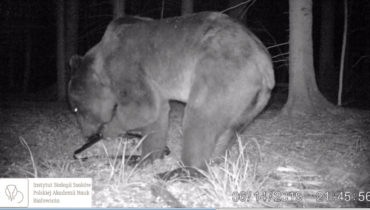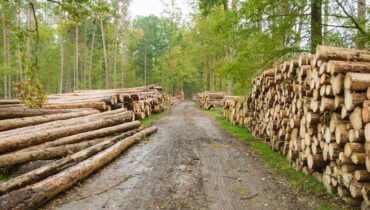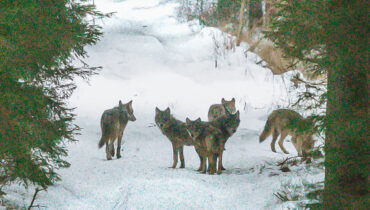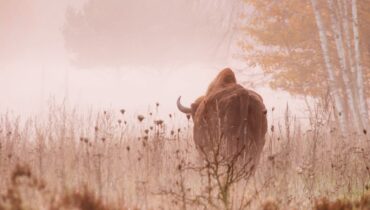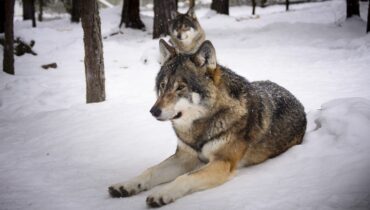Our new paper reports the first bear documented on the Polish side of Białowieża Forest since 1963. We give the historical overview of bears in the forest and point out that as the bear population in central Belarus is growing, we can probably expect more bears to disperse towards Poland over the coming years. This means bears might eventually naturally recolonise the Polish lowlands. In the paper, we took the opportunity to review how bears may affect the ecology of local forests and then finish up by discussing how might we best conserve a nascent bear population.
Cheers to my coauthors for an excellent bit of team work!
The most recent news of bears in Białowieża Forest
After our accidental recording of the bear during our field studies in June 2019, the bear was spotted a couple of times over the following couple of weeks. First a scientist saw him in the National Park’s strict reserve. Then photos appeared on social media of a damaged apiary in Czerlonka Village – the photos showed what appeared to be bear claw marks all over the beeswax. A few days later he appeared on the Belarusian side of the forest, where several direct and indirect (e.g. tracks) observations continued to be spotted for the following month. He then dissapeared.
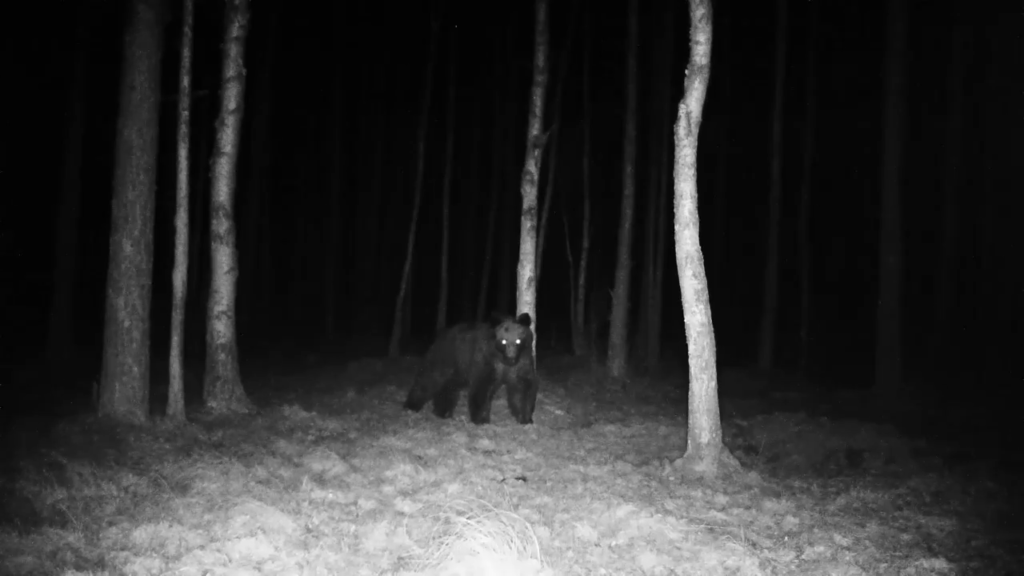
In April 2020, nine months later, a new video emerged on social media. It showed a bear on the Belarusian side of Białowieza Forest. Then finally in September, a bear was seen again on the Polish side of the forest. It is unknown whether all these observations were of the same individual. It is possible the same bear stayed in the forest this whole time, that it returned after a period of absence, or that it was a completely new bear (or perhaps there are even more than one?).
The future of the bear in Białowieża Forest looks bright. Personally I think it would be wonderful if more individuals disperse here, helping to restore a permanent bear population. It would make the forest a wilder place, and a more complete ecosystem, while undoing some of the human-caused damage of the last century. It must be borne in mind that any conflicts with people will need to be carefully managed in order to make the bear’s coexistance with people as harmonious as possible.
I’ll soon be publishing a more detailed popular science about the story. Watch this space.


